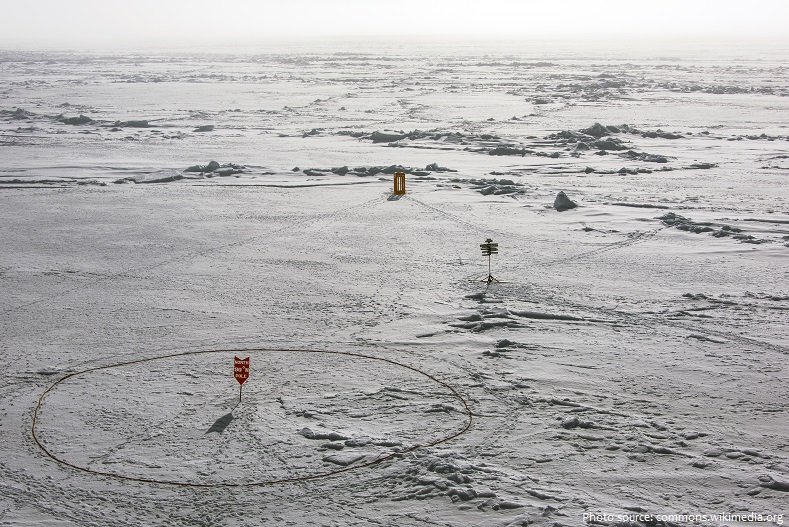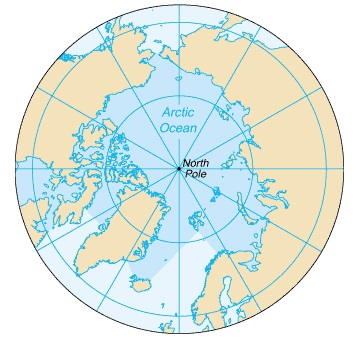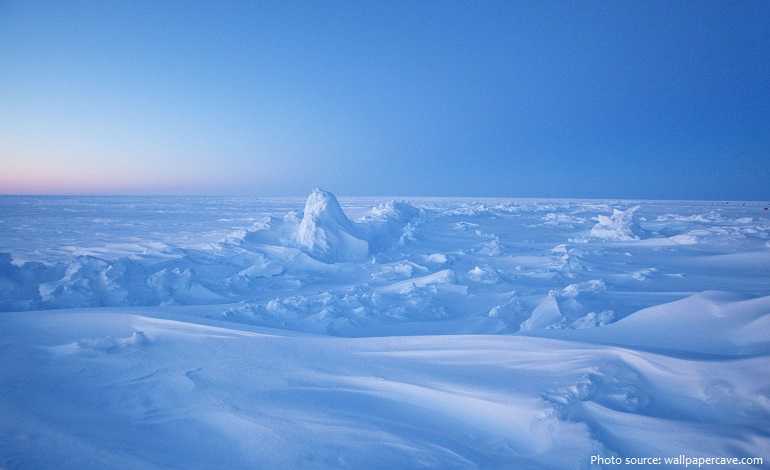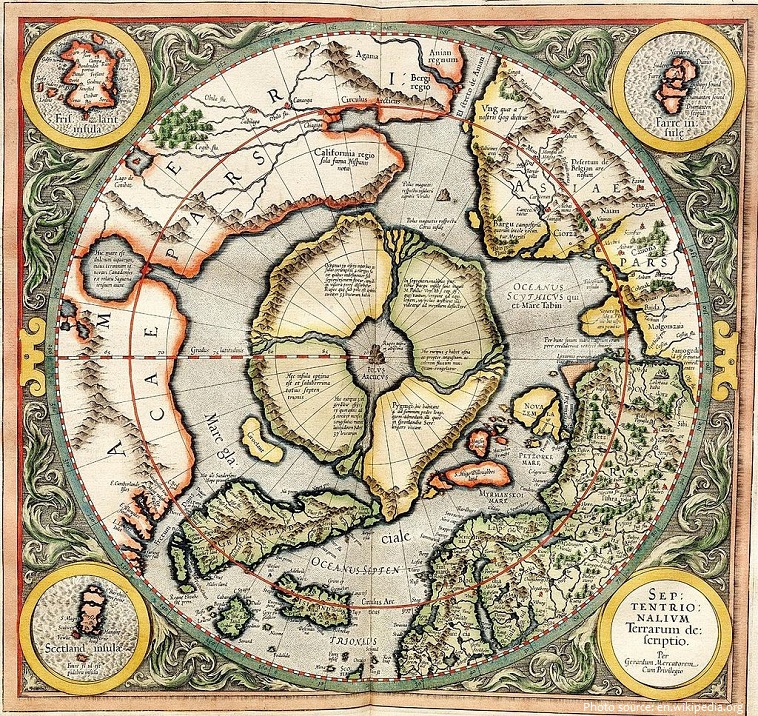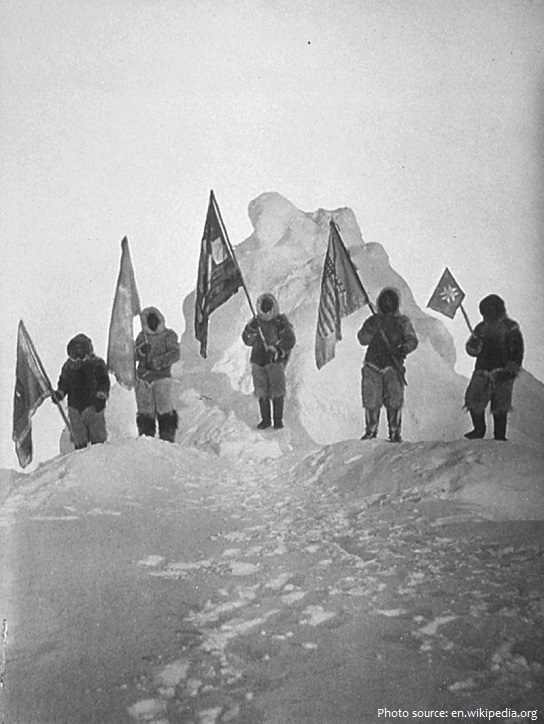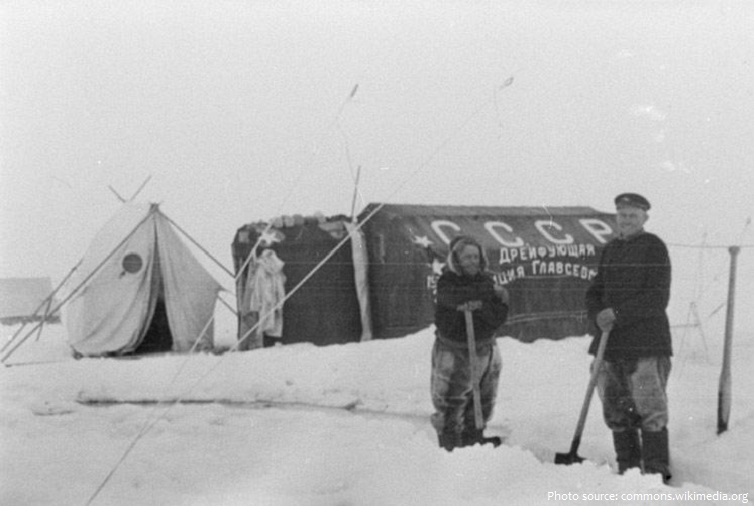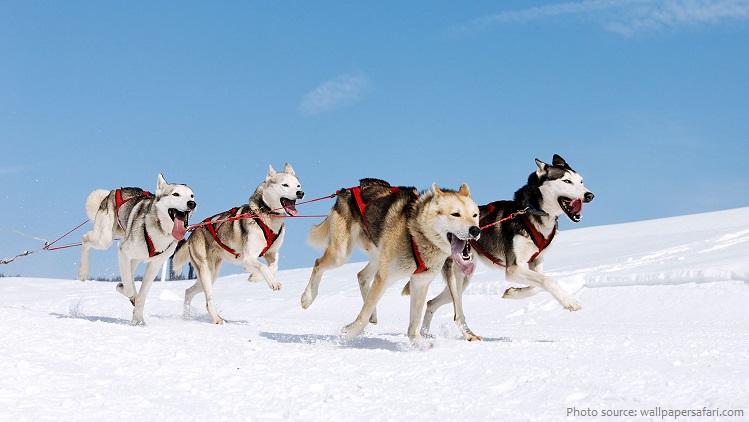The North Pole also known as the Geographic North Pole or Terrestrial North Pole is defined as one of the two points where the Earth‘s axis of rotation meets the Earth’s surface (the other being the South Pole, diametrically opposite).
The North Pole is the northernmost point on the Earth, and defines latitude 90° North.
It is situated in the middle of the Arctic Ocean, amid waters that are almost permanently covered with constantly shifting sea ice.
The North Pole and surrounding waters are international waters that do not belong to any country.
The sea depth at the North Pole has been measured at 4,261 meters (13,980 feet).
The closest land to the North Pole is Canadian territory Nunavut. It is followed by Greenland the world’s largest non-continental island.
The North Pole is substantially warmer than the South Pole because it lies at sea level in the middle of an ocean (which acts as a reservoir of heat), rather than at altitude on a continental land mass.
The North Pole has two seasons, summer and winter. The Sun at the North Pole is continuously above the horizon during the summer and continuously below the horizon during the winter. Sunrise is just before the March equinox (around 20 March); the sun then takes three months to reach its highest point at the summer solstice (around 21 June), after which time it begins to sink, reaching sunset just after the September equinox (around 23 September).
Winter temperatures at the North Pole can range from about −50 to −13 °C (−58 to 9 °F), perhaps averaging around −31 °C (−24 °F). Summer temperatures average around 0 °C (32 °F).
The geographic North Pole does not coincide with the magnetic North Pole. Located about 400 kilometers (250 miles) south of the geographic North Pole lies the magnetic North Pole. However, this location is not fixed and is moving continually, even on a daily basis. The Earth’s magnetic North Pole is the focus of the planet’s magnetic field and is the point that traditional magnetic compasses point toward.
As early as the 16th century, many prominent people correctly believed that the North Pole was in a sea, which in the 19th century was called the Polynya or Open Polar Sea. It was therefore hoped that passage could be found through ice floes at favorable times of the year. Several expeditions set out to find the way, generally with whaling ships, already commonly used in the cold northern latitudes.
The US explorer Frederick Cook claimed to have reached the North Pole on 21 April 1908 with two Inuit men, Ahwelah and Etukishook, but he was unable to produce convincing proof and his claim is not widely accepted.
The conquest of the North Pole was for many years credited to US Navy engineer Robert Peary, who claimed to have reached the Pole on 6 April 1909, accompanied by Matthew Henson and four Inuit men, Ootah, Seeglo, Egingwah, and Ooqueah. However, Peary’s claim remains highly disputed and controversial.
The first verified flight over the North Pole was achieved on 12 May 1926 by Roald Amundsen, leader of an expedition to the polar ice cap between Europe and North America, and Umberto Nobile, the airship’s designer and pilot.
In May 1937 the world’s first North Pole ice station, North Pole-1, was established by Soviet scientists by air 20 kilometres (13 mi) from the North Pole.
The first ships to visit the pole were the U.S. nuclear submarines Nautilus (1958) and Skate (1959), the latter surfacing through the ice, and the Soviet icebreaker Arktika was the first surface ship to reach it (1977).
The first person to reach the North Pole – on foot (with dogs, but supported by airdrops) – was Sir Wally Herbert (UK), on 6 April 1969.
On 4 May 1990, Børge Ousland and Erling Kagge reached the North Pole on skis without resupply, after a journey lasting 58 days, making them the first people to reach the North Pole unsupported. (A third companion, Geir Randby, was injured en route and had to abandon the expedition.)
The first person to walk, solo and unsupported to the North Pole was Børge Ousland (Norway) in 1994.
A lone polar bear, tracks of an Arctic fox, unidentified sea creatures, and several birds have been observed at the North Pole over the years.
In some children’s Western cultures, the geographic North Pole is described as the location of Santa Claus‘ workshop and residence.
